
Int.J.Curr.Microbiol.App.Sci (2018) 7(11): 1279-1287
1279
Original Research Article https://doi.org/10.20546/ijcmas.2018.711.149
Comprehensive Evaluation on Status and Changes in Fishing Practices of
Migratory Fishermen in Cochin Back Waters
P. Srikanth1*, A. Balasubramanian2, K. Jyotsna Rajeswari3,
G. Suresh4 and B. Manoj Kumar5
1Krishi Vigyan Kendra, Undi, ANGRU, Andhra Pradesh, India
2Department of Fisheries Resource Management, College of Fishery science, Muthukur,
Nellore, Andhra Pradesh, India
3Sri MVKR Fishery Polytechnic College, Bavadevarapalli, SVVU, Andhra Pradesh, India
4Department of Aquaculture, College of Fishery science, Muthukur, Nellore,
Andhra Pradesh, India
5Department of Fisheries Engineering & Technology, KUFOS Panangad, Kochi, Kerala, India
*Corresponding author
A B S T R A C T
Introduction
Globally fisheries sector is gaining momentum
due to its significant contributions to the
humankind by providing financial security to
over 14 million people by providing
employment. It is estimated that 56.6 million
people were engaged in the primary sector of
capture fisheries and aquaculture in 2014 as
full and part time). Judicious tapping of
fisheries resources is imperative to bridge
protein requirement with rapidly multiplying
human population. This can be possible by
elevating the fish production through fishing
and aquaculture means. Fishing which is
considered as one of the ancient occupation of
International Journal of Current Microbiology and Applied Sciences
ISSN: 2319-7706 Volume 7 Number 11 (2018)
Journal homepage: http://www.ijcmas.com
Comprehensive investigation on status and changes in fishing practices of migratory
fishermen in Cochin backwaters, Kerala was conducted for a period of one year from June
2016 to May 2017. Identified predominant habitats of migratory fishermen viz., Nettor,
Vypin and Mulavukadu were identified. Data on type of crafts, gears, and fish catch
composition obtained from these gears were collected fortnightly from these study areas.
The coracle and bottom set gillnet were the predominant raft and fishing gear used by the
migratory fishermen of the study areas. Technical details of both raft and gears were
recorded. Different type of bottom set gillnets used by the fishermen were locally known
as „Njanduvala‟ with mesh size of 90 to 150mm, „Karimeenvala‟ with 50 mm and 70 mm
and for „Koori vala‟ having mesh size of 40 to 60mm. The twine thickness for all these
nets was 0.1 to 0.2 mm. The Hanging co-efficient was 0.4-0.6 for both „Njanduvala‟, and
„Karimeenvala while it was 0.5 to 0.6 for „Koori vala‟. Main catch from the former two
gears were crabs and targeting pearl spot (Etroplus suratensis) and catfishes from the later
one.
Keywords
Migratory fishermen,
Coracle, Set gillnet,
fishing
Accepted:
10 October 2018
Available Online:
10 November 2018
Article Info

Int.J.Curr.Microbiol.App.Sci (2018) 7(11): 1279-1287
1280
the humankind originated along with hunting.
The fishing can be classified as subsistence,
small scale and large scale based on the inputs
involved. Marine fishing in India can be
grouped under small scale or large scale
fishing. Even though Kerala is immensely
gifted with inland water resources, the fishing
activity in the inland sector is mainly in small
scale and for the majority of the fishermen, it
is only subsistence fishing. The inland
resources of the state include both freshwater
and brackish water. The total area of all these
resources together is about 2,26,274 ha. The
brackish water bodies of the state include 49
inter-connected backwaters which form more
than 46,000 ha in area. Cochin back waters
which form a part of the Vembanad Lake and
Ashtamudi Lake are two important brackish
water areas of the state, both of which have
been declared as Ramsarsite.
According to the statistics of the Kerala state
fisheries department, the total inland
fishermen population of the state is 10.24
lakh. The main gears used in the brackish
water sector of the state are stake nets, dip nets
and gill nets. The present inland fish
production of the state was 2.1 Lakh tonnes
during the year 2014-2015. Poor production
from these inland water bodies are mainly due
to general trend in the country siltation,
profuse weed infestation, pollution,
construction of barricades and fishing with
small mesh nets (Sugunan and Sinha, 2001).
VembanadLake is the largest and the most
important water body which fetches the
livelihood for inland fishermen especially for
the migratory fishermen who migrated from
Karnataka. Presence of these fishermen in
these regions has led to conflicts with the local
fishermen (Hornell, 1925; Gopinath, 1953;
Shetty, 1965; and Kurup, 1982). There is no
study yet conducted on fishing activities of
migratory fishermen in the Cochin back
waters. Owing to these, the present study was
undertaken to evaluate the status and fishing
practices being carried out by the migratory
fishermen
Materials and Methods
Study was carried out for a period of one year
from June 2016 to May 2017 in the Cochin
backwaters, Kerala. During the study
important settlements of migratory fishermen
viz., Nettor, Vypin and Mulavukadu were
identified for fortnight collection of data on
gears, crafts and fishing methods employed by
migratory fishermen of these regions. In
addition to that species wise catch and total
catch were also recorded. All these data were
collected through visual observation and
personal interview with randomly chosen
fishermen from the study areas. The socio
economic and techno economic details of the
fishermen were also collected based on two
pre-tested interview schedules.
Design and technical details of crafts
Various technical details about the crafts such
as type of material, length overall (LOA),
beam, draft, depth, diameter, weight, type of
construction life span of the craft, and
preservatives used were collected. Perspective
drawings of craft and gears were made.
Design and technical details of fishing gears
The design features of nets were collected and
documented according to FAO catalogue on
fishing gear design (Nedelec, 1975 and Kazi et
al., 2011). The design drawings of the nets
were drawn to scale by using coral draw
software. The units were indicated in metric
equivalents viz., metre (m) for longer
dimension such as lengths of head rope, foot
rope and float line with two decimals and
millimetre (mm) for shorter dimensions such
as stretched mesh size, diameter of rope and
floats & sinkers. The unit of weight was given
in kilogram (g). The size of netting yarn was

Int.J.Curr.Microbiol.App.Sci (2018) 7(11): 1279-1287
1281
designated according to the Tex system for
multifilament. The hanging ratio (E), i.e., the
length relation between the head rope and the
netting to be attached to it, was estimated
(Parsa et al., 2014). The symbols in the fishing
gear drawing were used as per Nedelec
(1975), The operational aspects of gillnet such
as fishing ground, duration of the trip, depth of
operation, mode of operation, etc. were
collected using structured schedule
Results and Discussion
The migratory fishermen are mainly
concentrated at Nettoor, Vypin, Mulavukadu
region in the Cochin backwaters. They are
mainly from Unsoor (near Mysore),
Karnataka. Nettor has two families while
Mulavukad and Vypin have 3 each. In a
family about 4-5 members are involved in
fishing.
Details of the fishing raft employed by
Migratory fisherman
The raft used by migratory fishermen is
coracle which is a saucer in shape. The
dimension of the coracle is 15-25 cm in depth
and 2.0 – 2.4 m dia. and is made with bamboo
strips. This skeleton is covered with Palmyra
leaves or HDPE sheets. Outer edge of the craft
is strengthened using several layers of bamboo
strips and cloths or plastic sheet (Fig. 1). One
or two coats of coal tar is given to the outer
surface to make the craft waterproof. Weight
of a coracle ranges from 10-20 kg and cost
ranges from Rs. 5000 - 6000/-.
Details regarding the craft and other
operational details are given in the Table 1.
Usually two fishermen carry out fishing from
a coracle. One person will be engaged in
controlling the coracle while other in
operating the fishing gear. Sometimes women
are also engaged in fishing. Oars are used for
propulsion. Oars are having length of 1.3m out
of that 1m is the stick length and 30cm is the
wooden plane. The average life span of a
coracle is 7 months. The coracle is the only
craft used by the migratory fishermen of
Cochin back waters which is locally known as
“Kottavanchi” or “Vattavanchi”. The coracles
are exclusively used in all backwater areas and
rivers in Kerala by the migratory fishermen
from Karnataka (Remesan and Ramachandran,
2005). It was observed in the present study
that every family of the migratory fishermen
had 3-4 coracles of different sizes and the life
span of a coracle was about 1 year. These
coracles were brought from Karnataka.
Various type of gillnets are operated from the
coracle by the migratory fishermen. All
members of the migrant fishermen family
including women and children are experts in
the operation of coracles.
Details of the fishing gear employed by
Migratory fisherman
Gill nets are the only gear used by the
migratory fishermen in the landing centres
studied. The type of operation of the gear is
bottom set in nature. The design details of the
gears used are given in Table 2. Based on the
design of the net and species caught the gears
are named as „Karimeenvala‟ (Etroplus net),
„Koori vala‟ (cat fish net) and „Njanduvala‟
(Crab net).
All these nets are operated throughout the
year. Based on the tides and water depth, the
depth and length of the net is changed by the
fishermen. The fishermen operate the nets
during morning (6am - 9 am) and evening
(4.30 - 7 pm). The duration of fishing hours is
2 to 3 h. In every trip 7 to 10 nets of different
types are operated. The type of net to be
operated is decided with reference to the catch
obtained in the previous haul. These gillnets
operated with the aim to target a particular
group of fish (Remesan and Ramachandran,
2005).

Int.J.Curr.Microbiol.App.Sci (2018) 7(11): 1279-1287
1282
Table.1 Details of the raft operated by Migratory fishermen
SI. No
Nettor
Vypin
Mulavukad
Category of vessel
Non-Motorized
(coracle)
Non-Motorized
(coracle)
Non-Motorized
(coracle)
LOA of fishing craft(m)
2-2.5
2-2.5
2-2.5
Life span of craft
7months
7months
7months
No.of crafts
5
6
8
No.of members operated
4
6
6
Cost of craft
7000
7000
7000
Make of craft
Tar, bamboo sticks
plasticjack, saree
cloths
Tar, bamboo
sticks plasticjack,
saree cloths
Tar, bamboo sticks
plasticjack, saree
cloths
No. of crafts operated
2
2
2
No. of crew
2
2
2
No. Fishing days in month
25-26
25-26
25-26
Fishing season
Throughout the year
Throughout the
year
Throughout the
year
Distance of the fishing
ground(km)
1to 2
1to 2
1to 2
No. of operations per day
1 to 2
1 to 2
1 to 2
Fishing time
6am-10am
5pm-7pm
6am-10am
4pm-6pm
6am-10am
4pm-6pm
Quantity of ice used per
month(kg)
10-12
10-12
10-12
ACESSORIES used for
fishing
Oars & thermocole
(for sitting inside the
coracle)
Oars &
thermocole (for
sitting inside the
coracle)
Oars & thermocole
(for sitting inside
the coracle)
Operational cost per
trip(Rs)
100
100
100

Int.J.Curr.Microbiol.App.Sci (2018) 7(11): 1279-1287
1283
Table.2 Design features of gillnets operated by migratory fisherman
Characteristics of the Net
Bottom set gillnet
Local name of the net
„Njanduvala‟
„Karimeenvala‟
„koori vala‟
Main webbing mesh size(mm)
150 mm
40-60
50-70mm
Type of twine
PA mono
Pa mono
Pa mono
Twine specification
diameter(mm)
0.2
0.10-0.2
0.10-0.2
No of meshes in depth
100
50
33
Horizontal hanging coefficient
(E1)
0.6
0.4-0.6
0.5-0.6
Vertical hanging coefficient√1-
(E2)
0.64
0.5-0.7
0.5 - 0.7
No.of meshes along head rope
per unit
363
2800
1650
Hung length (m)
32.67
77
57.75
Hung depth
9
1.76
1.67
Colour of webbing
green
white
green
Selvedge twine type
multifilament
multifilament
multifilament
Selvedge diameter(mm)
210x2x3
210x1x2
210x1x2
Selvedge mesh size(mm)
155
55mm
70
No. of selvedge meshes in depth
1
1
1
Head rope material
PP
PP
PP
Head rope diameter
4mm
4mm
4mm
float material
thermocol
thermocol
thermocol
Float dimension(mm)
70x60
40x36
40x36
No of floats per unit
15
50
70
Foot rope material
PP
PP
PP
Foot rope diameter(mm)
2.5
2.5
2.5
Sinker material
lead
Lead
lead
Sinker weight (g)
8
5
5
No. of sinkers per unit
33
77
57
Total fleet length(m)
33x3=99
77x2=140
57x2=114





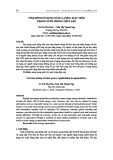

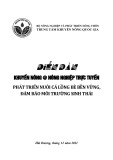
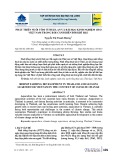
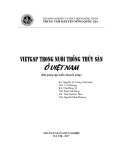

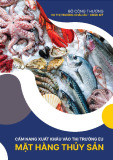
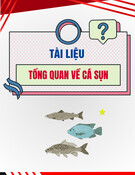
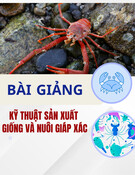
![Bài giảng Kinh tế thủy sản [mới nhất]](https://cdn.tailieu.vn/images/document/thumbnail/2025/20250808/kimphuong1001/135x160/91611754640469.jpg)

![Kỹ thuật nuôi thâm canh cá lóc trong ao đất: Tài liệu [chuẩn/mới nhất]](https://cdn.tailieu.vn/images/document/thumbnail/2025/20250724/kimphuong1001/135x160/3731753342195.jpg)




![Kỹ thuật nuôi cá nâu trong ao đất: Tài liệu [Mới nhất]](https://cdn.tailieu.vn/images/document/thumbnail/2025/20250723/vijiraiya/135x160/29781753257641.jpg)
![Kỹ thuật nuôi cá mú trong ao đất: Tài liệu [Mới nhất]](https://cdn.tailieu.vn/images/document/thumbnail/2025/20250723/vijiraiya/135x160/85681753257642.jpg)



